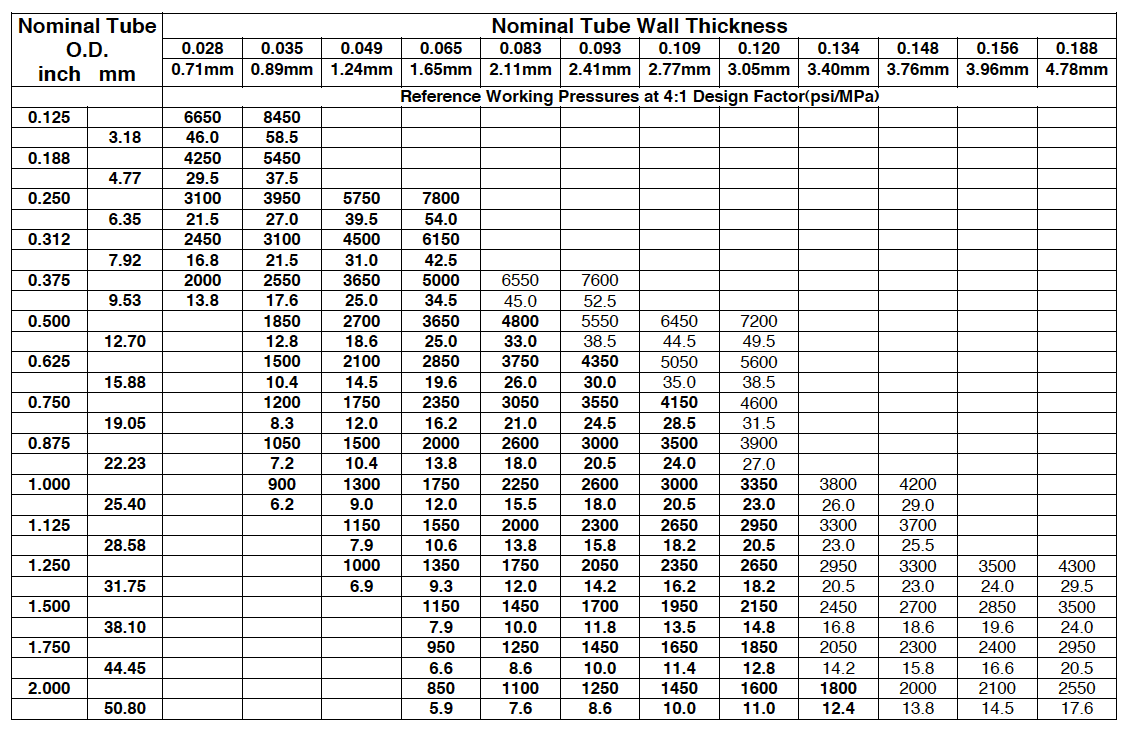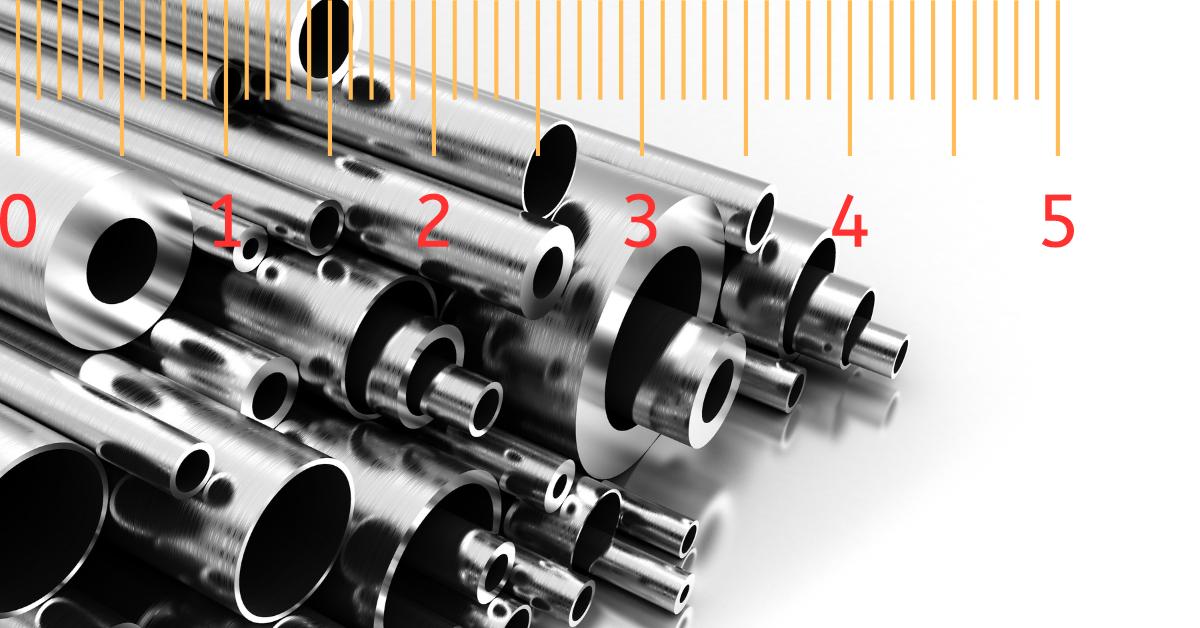Steel tubing size chart in some particular individual tubes are not randomly manufactured. Tube size is set up matching to dimensional series based on specific models. Tube dimensions are specified in inches.
The size of steel tubes belong to the significant characteristics of tubes. With this consideration tube dimensions must be given in such a way that can completely determine the tube. For steel tubes with circular cross section the three main dimensions except for the length are: outside diameter (OD), inside diameter (ID) and wall thickness (WT).
The wall thickness of steel tubing is measured by gauge while thicker tubing is sized in fractions or millimeters. The lower the gauge number the thicker the wall thickness of the tube. For example 10 gauge tube measures out at a .134 in. wall thickness, although 20 gauge tube measures out at a .035 in. wall thickness. The gauge dimension also remains consistent among the various steel tubing sizes. For example, the thickness for 10 gauge tube will consistently measure .134 inches, whether it is 1-1/2 in. O.D., 2 in. O.D., or 4-1/2 in. O.D. tube.
Regarding to the type of tubes also belong the appropriate dimensions and the dimensional tolerances.
Steel tubing is available in a variety of sizes and shapes, including round, rectangular, and square. The most common type is round, and this is usually specified by its outer diameter (OD). The OD is the measurement from one side of the tube to the other and is measured in inches. The wall thickness (WT) of the tube is also important in determining the size. The WT is the measurement of the thickness of the tube and is measured in inches.
Once you’ve identified the size of steel tubing you need, it’s important to understand the grade of steel that it’s made from. The grade of steel will determine the strength and durability of the steel tubing. Common grades of steel for steel tubing include 1010, 1020, 1026, and 1045. Steel grades are often denoted by a number and letter combination, such as 1020 or 1045, which refer to the carbon content of the steel.
When ordering steel tubing, it’s important to specify its length. Steel tubing is typically sold in lengths of 6’, 12’, 20’, or 24’. It’s important to note that the length is measured from end to end and doesn’t include the OD or WT. When ordering steel tubing, it’s also important to specify the type of finish, such as galvanized, black, or raw.
It’s important to ensure that the sizing and grade of steel tubing is correct. To do this, it’s important to use a steel tubing size chart and to understand the grade of steel that the tubing is made from. With the right steel tubing size chart and grade of steel, you can ensure that the steel tubing you order is the right size and strength for your application.
Common Steel Tubing Size and Gauge
The most commonly requested gauges of tubing are 10, 11, 12, 13, 14, 16, 18 and 20. This is the tube gauge. If you convert this to inches, the steel tubing size chart will looks like this:
- 10 gauge = .134 inches
- 11 gauge = .120 inches
- 12 gauge = .109 inches
- 13 gauge = .095 inches
- 14 gauge = .083 inches
- 16 gauge = .065 inches
- 18 gauge = .049 inches
- 20 gauge = .035 inches

A tube that has an outside diameter measuring 1.5 inches and a wall thickness measuring .065 inches is “named”, or called out as, “1-1/2 inch 16 gauge tube”.
It’s important to understand the different types of steel tubing and their associated size charts. Steel tubing size charts are available online and are typically organized according to the OD and WT. It’s also important to understand the grade of steel that the tubing is made from. By using the right steel tubing size chart and grade of steel, you can ensure that the steel tubing you order is the right size and strength for your application.
When purchasing custom steel tube or designing a project that requires telescopic tube, it is important to know the right size. Tube gauge refers to the wall thickness of the tube and the gauge measurement will be consistent from tube size to tube size. If you still have questions relating to steel tubing size chart, don’t hesitate to contact us.
